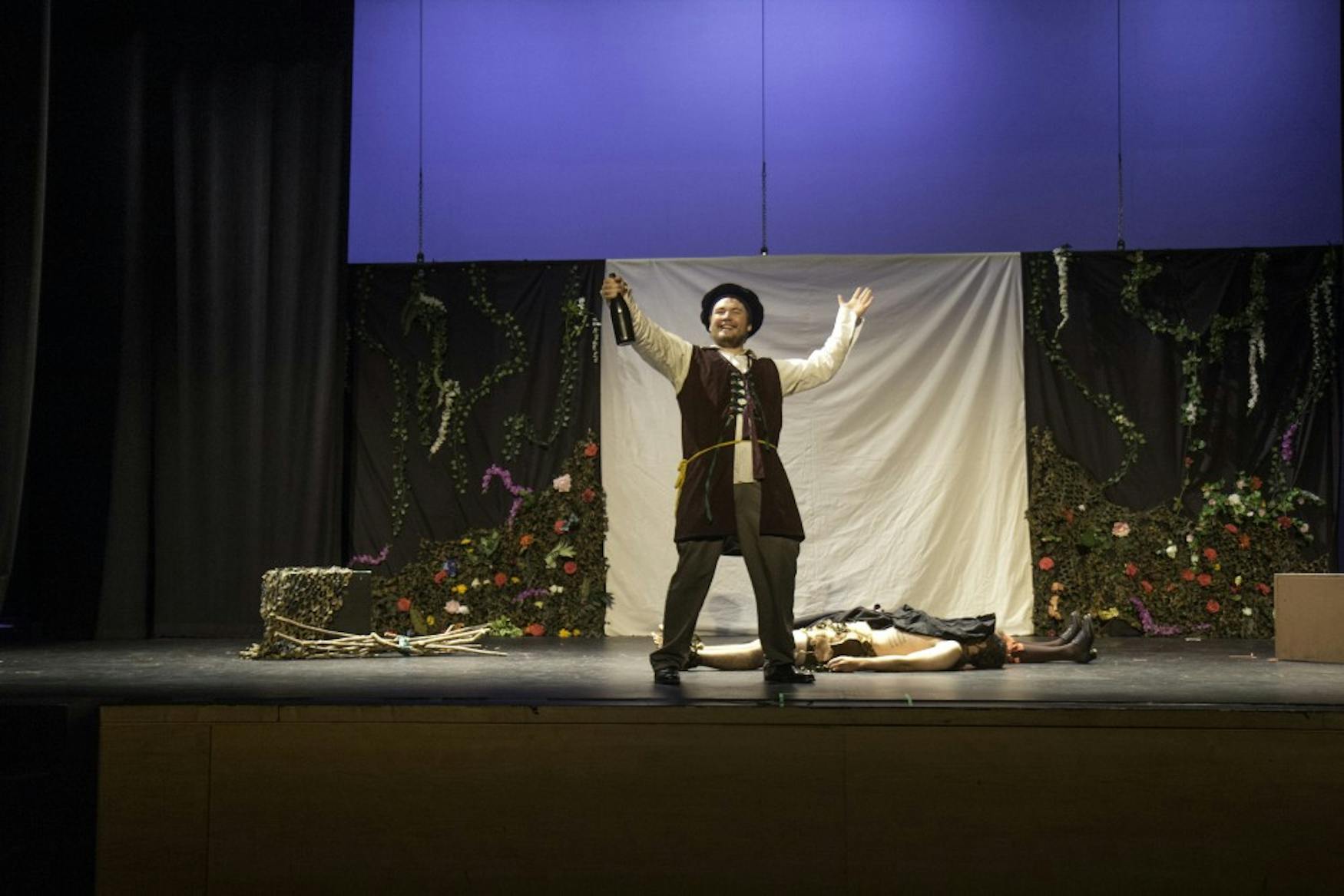‘The Tempest’ takes ’Deis by storm
This weekend, Hold Thy Peace, a student-run group that performs Shakespeare and classic theater on campus, presented “The Tempest,” directed by Kat Lawrence ’20 and produced by Gabi Burkholz ’21. The last play written by William Shakespeare, “The Tempest” is about a banished magician, Prospero, calling a huge storm — a tempest — upon a group of people to punish those who betrayed him. At the same time, he has to take care of his daughter’s future and prevent a demon from overthrowing him as the master of his island. Like the 2010 film adaption of “The Tempest,” this production changes the gender of the main character Prospero to female, renaming her Prospera.
One of the outstanding aspects of the show is the costume design. In Brandeis’ production, the forces of nature and magic are brilliantly presented by dancers with intricate costumes. Key elements of the story have to do with wind spirits and, during the first scene, the wind spirits literally grab the characters by their arms and legs and pull them into different directions, showing off the production’s impressive choreography. These spirits play an important role in the story and are well developed, unlike the humans — of which only Ariel’s character is fleshed out. In this production, while staying loyal to the original script, the spirit is presented with much more detail as well as humanlike characteristics, which is a lot of fun to watch.

TEMPESTUOUS TIDINGS: Aaron Young ’22 gives a strong performance as Caliban.
All that said, some of the sets did distract me, particularly the shadow play behind the veil. I was surprised by the idea of showing stories beyond the stage through shadows to create flashbacks. However, the light was so strong that I struggled to look straight at the stage without hurting my eyes. This is a minor flaw, but it did affect the overall experience.
Besides the amazing costume designs and choreography, some of the individual performances were remarkable. Leah Nashel ’20, Ariel, showed her versatility and talent by taking on singing, dancing and acting all together. Aaron Young ’22, Caliban, the half-human, half-monster creature who can barely walk straight, gave a very physically demanding performance that was both intimidating and hilarious. Esther Shimkin ’21 as Trincula brought out waves of laughter every time she appeared onstage. On the other hand, the human characters’ performances were relatively weak. Part of the reason for that is the original script: Some of the characters were rather flat in the first place and therefore very hard for actors to work with. However, the main character, Prospera, is a considerably more complicated individual. With the magic she possesses, Prospera is essentially a god among humans in the play, yet she is still troubled by some of her mortal emotions, such as the desire for power and vengeance. In this production, Prospera feels like a narrator, expressing little emotion, which is so much less than what the sorceress is meant to accomplish.
“The Tempest” has always been one my favorite plays, and I am glad to see a Brandeis production of it with great choreography and costume designs. I thoroughly enjoyed the show and cannot wait to see another production from Hold Thy Peace.



Please note All comments are eligible for publication in The Justice.